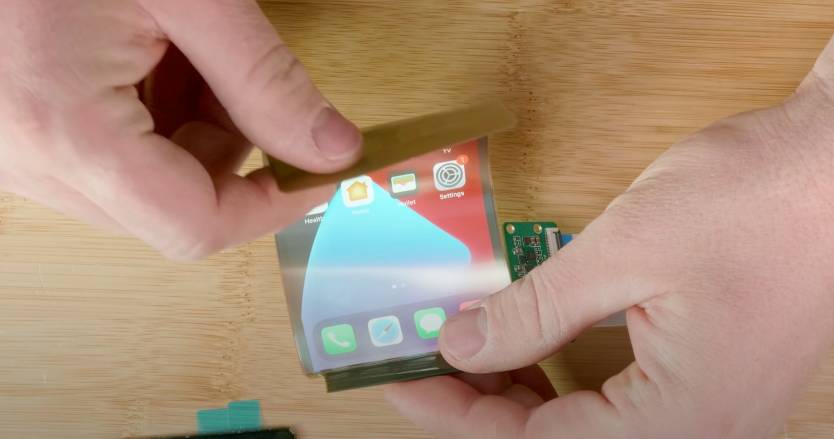- A YouTuber who built a functional iPhone from spare parts and added a 3.5 headphone jack to the iPhone 7 has a new challenge: Build a foldable iPhone.
- Scotty Allen demoed foldable displays that can mirror the screen of a regular iPhone. The next step is making a DIY foldable iPhone.
- Apple is reportedly working on foldable iPhone designs, with a new rumor claiming that the first such handset will be released in 2023.
Apple is working on foldable smartphones of its own, like every other company in the business. Several leaks claimed in the past few months that Apple is testing multiple foldable iPhone versions. One model supposedly features two displays connected by a hinge of some sort, so it doesn’t have a single continuous foldable screen. Apple is also testing foldable screens that would allow it to create a clamshell foldable like Samsung’s Galaxy Z Flip or a tablet-like foldable similar to Galaxy Fold devices.
A recent report from a top Apple insider says that the foldable iPhone will feature a 7.5-inch to 8-inch display and launch in 2023. That’s the sort of Galaxy Fold-like device that unfolds into a smaller tablet. But what if somebody creates a functional foldable iPhone even before Apple?
If you’ve been following the Strange Parts YouTube channel, then you know who Scotty Allen is. If you don’t, then all you need to know about him is that the YouTuber went to China to build an iPhone out of spare parts in 2017. That’s something anybody with access to the internet, access to China’s massive electronics supply industry, and a little tech-savviness could probably do. But Allen’s more impressive feat was adding a functioning 3.5mm headphone jack to the iPhone 7. That was the first iPhone to ship without the headphone jack that so many people still miss.

Allen released a new clip a few days ago where he showed us iOS running on a flexible display. The whole contraption makes use of foldable screens that retail for around $500 a pop and a Raspberry Pi that connects wirelessly to an iPhone to mirror the display. It’s obviously not a foldable iPhone, but the foldable display would be the foldable phone’s key component.
As you’ll see in the clip at the end of this post, Allen got two different foldable screens that were manufactured by Chinese display manufacturing BOE. The company has been looking to win Apple’s lucrative OLED business for years. BOE also supplies foldable displays for the Huawei Mate X2 phone that was just unveiled in China.

The foldable screens can bend relatively easily. Unfortunately, the thinner one is quite sensitive and prone to breaking.
Unlike his previous iPhone hardware hacks, Allen’s foldable iPhone dream might not be possible. The YouTuber explains that getting the foldable displays isn’t enough. He has to find a way to make the screens and phone talk to each other. Even if he succeeds, he’ll still have to find a foldable case and move all the components found in a regular iPhone inside that case.

Considering the display type he chose, he’s going for the “iPhone Flip” design, which would be like the Galaxy Z Flip handset. One thing he could do is move all the internal parts of a regular iPhone inside the case of the Galaxy Z Flip, but it’s a job that’s easier said than done. I am just speculating at this point, as Allen hasn’t yet explained how his foldable iPhone might look like.
If Ming-Chi Kuo’s report is accurate, Allen has until 2023 if he wants to beat Apple.








